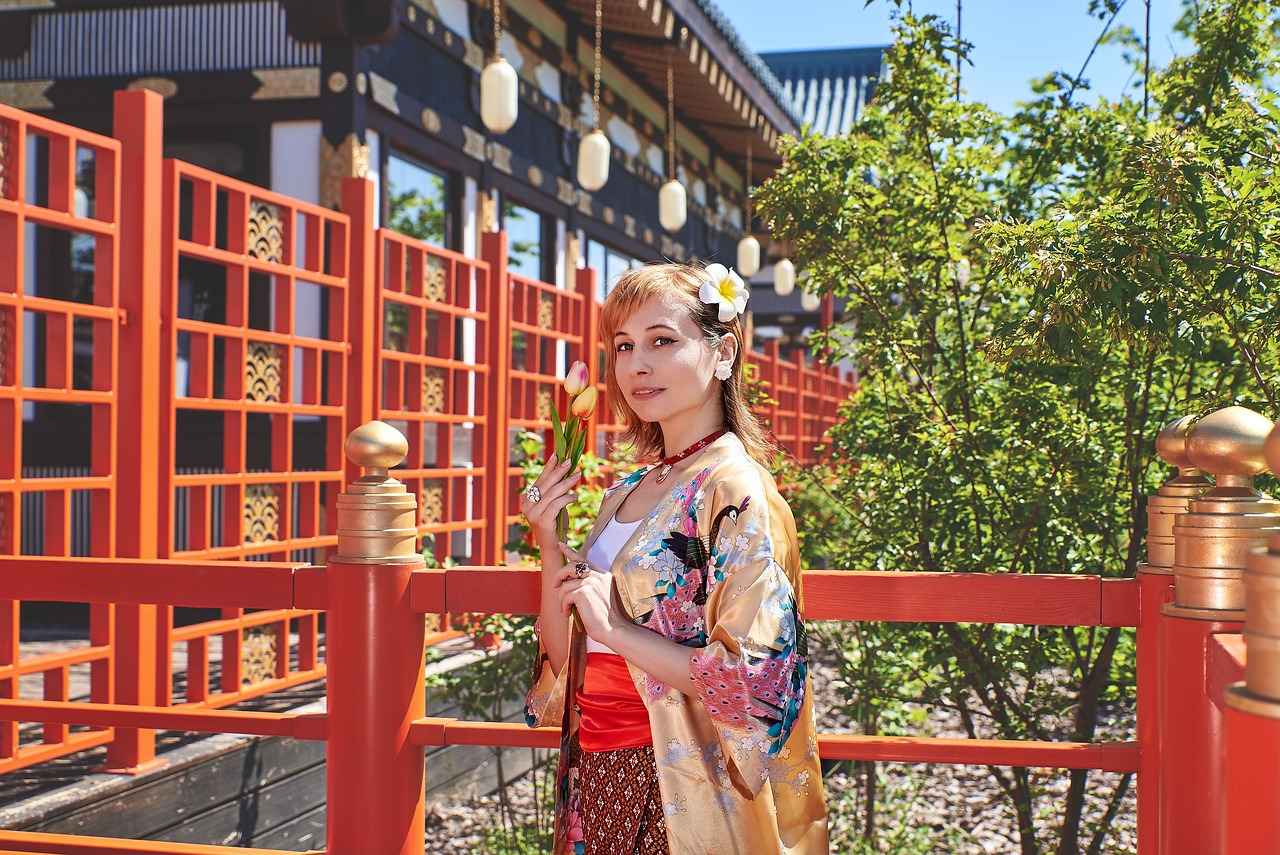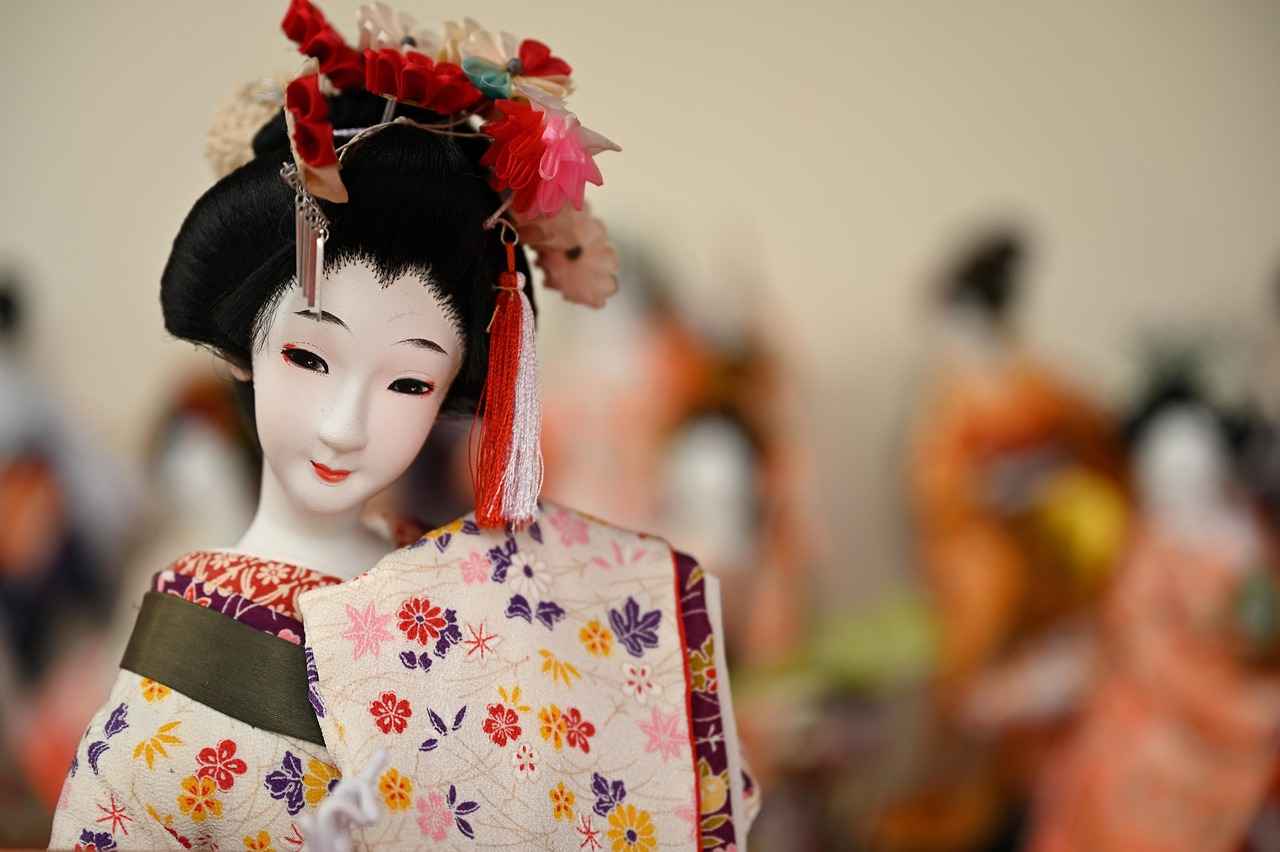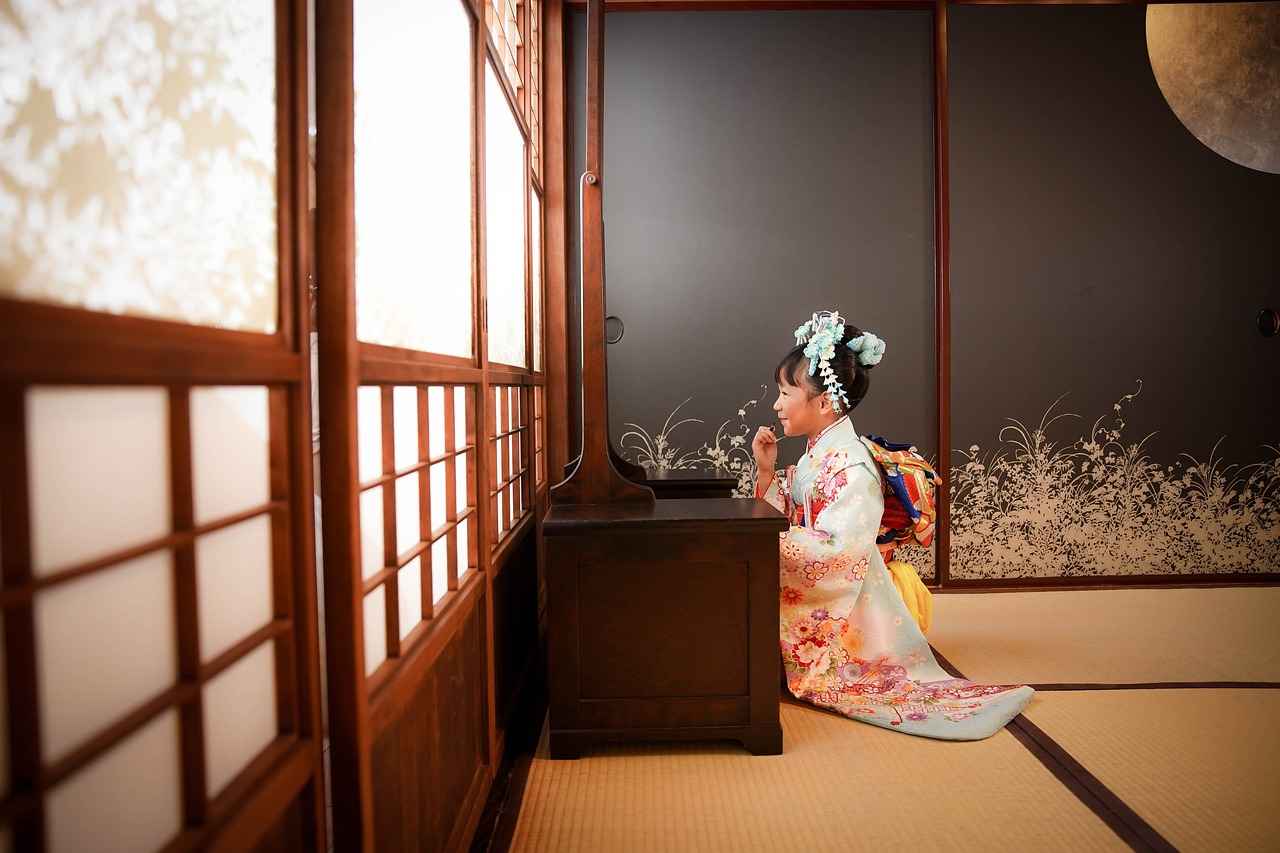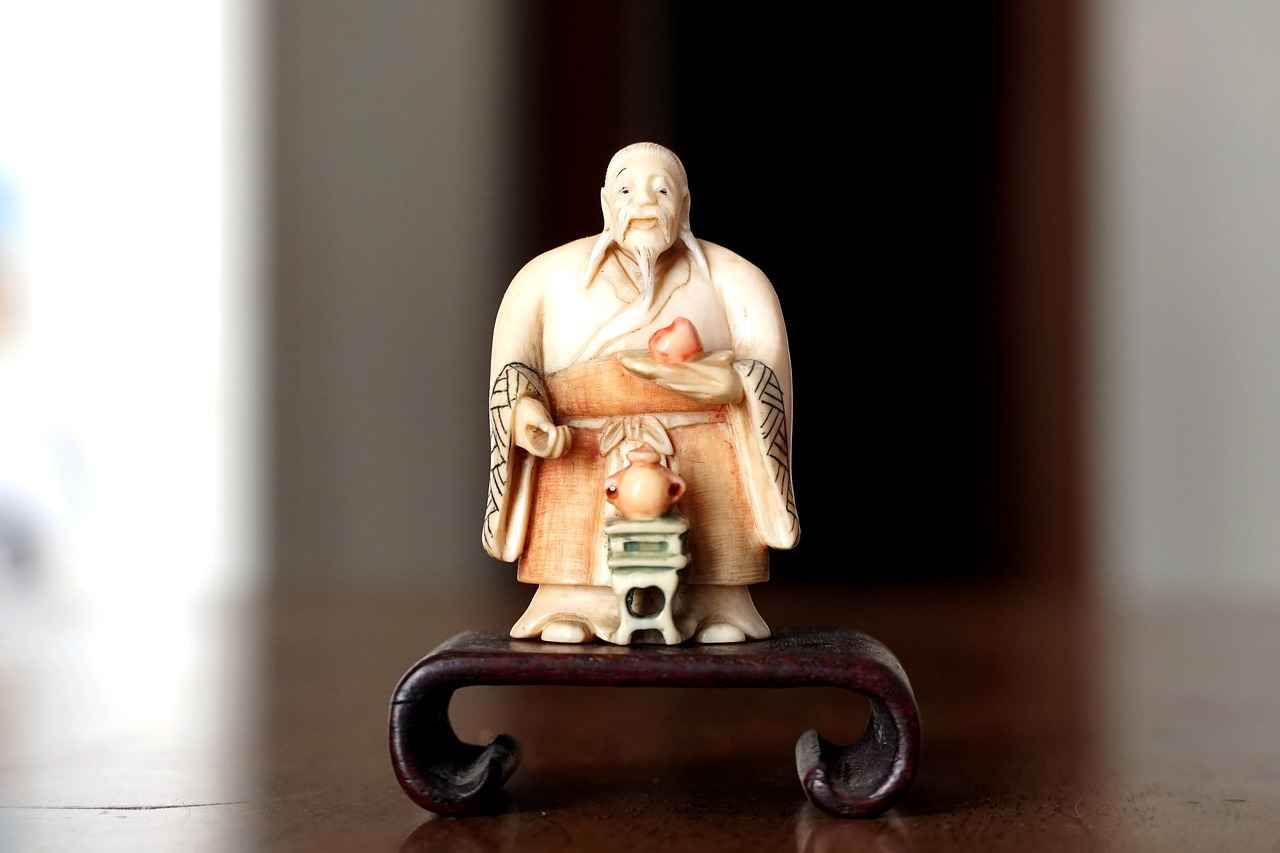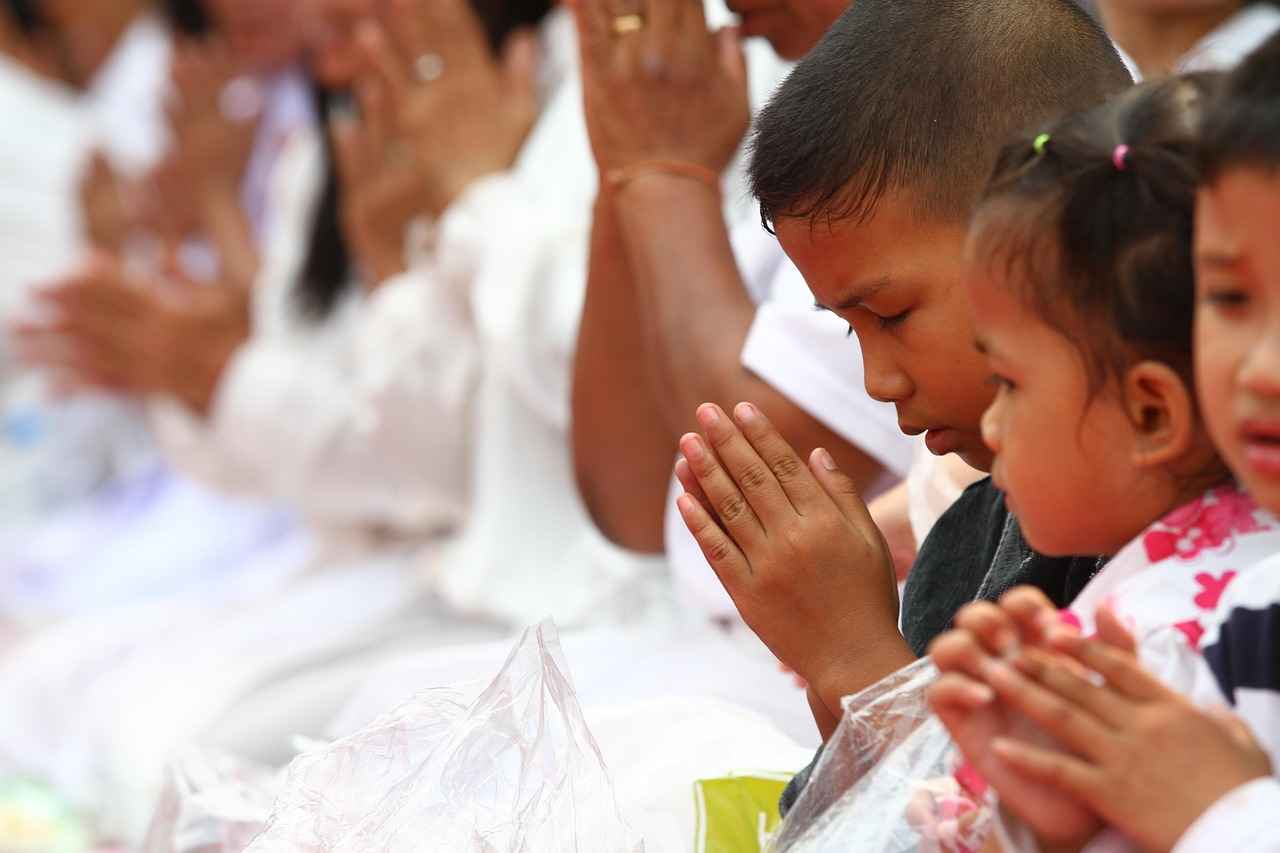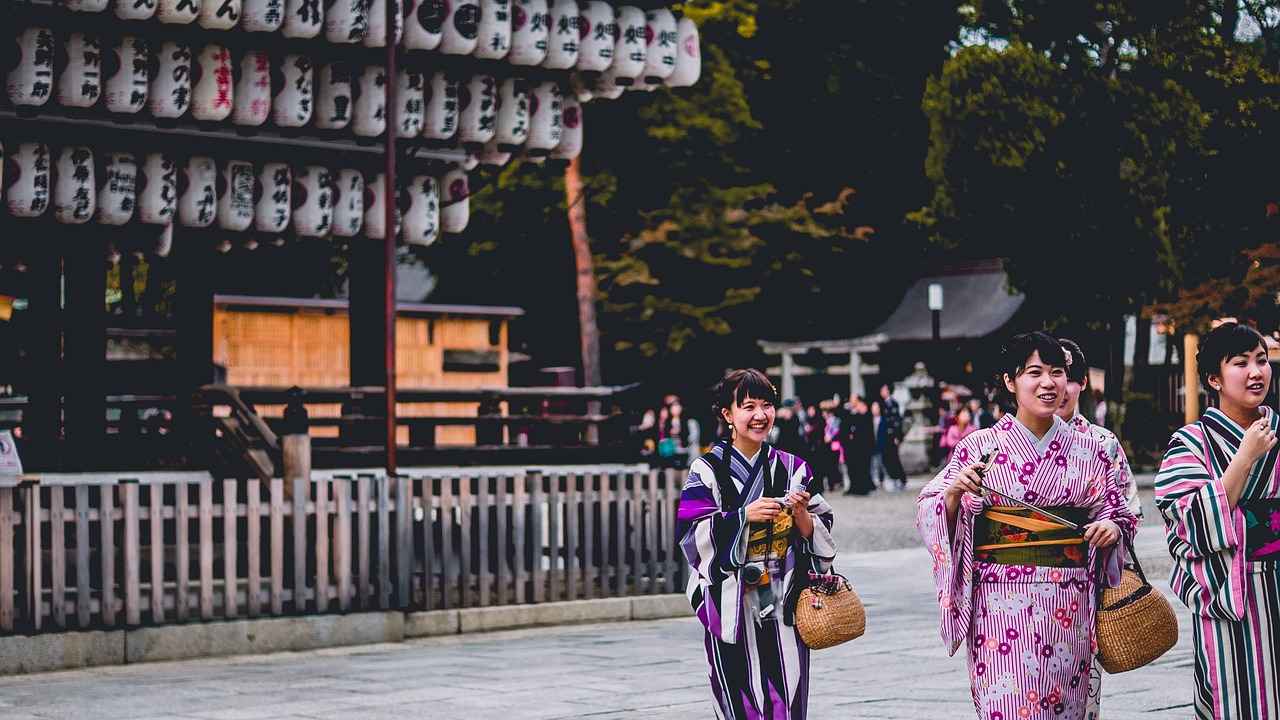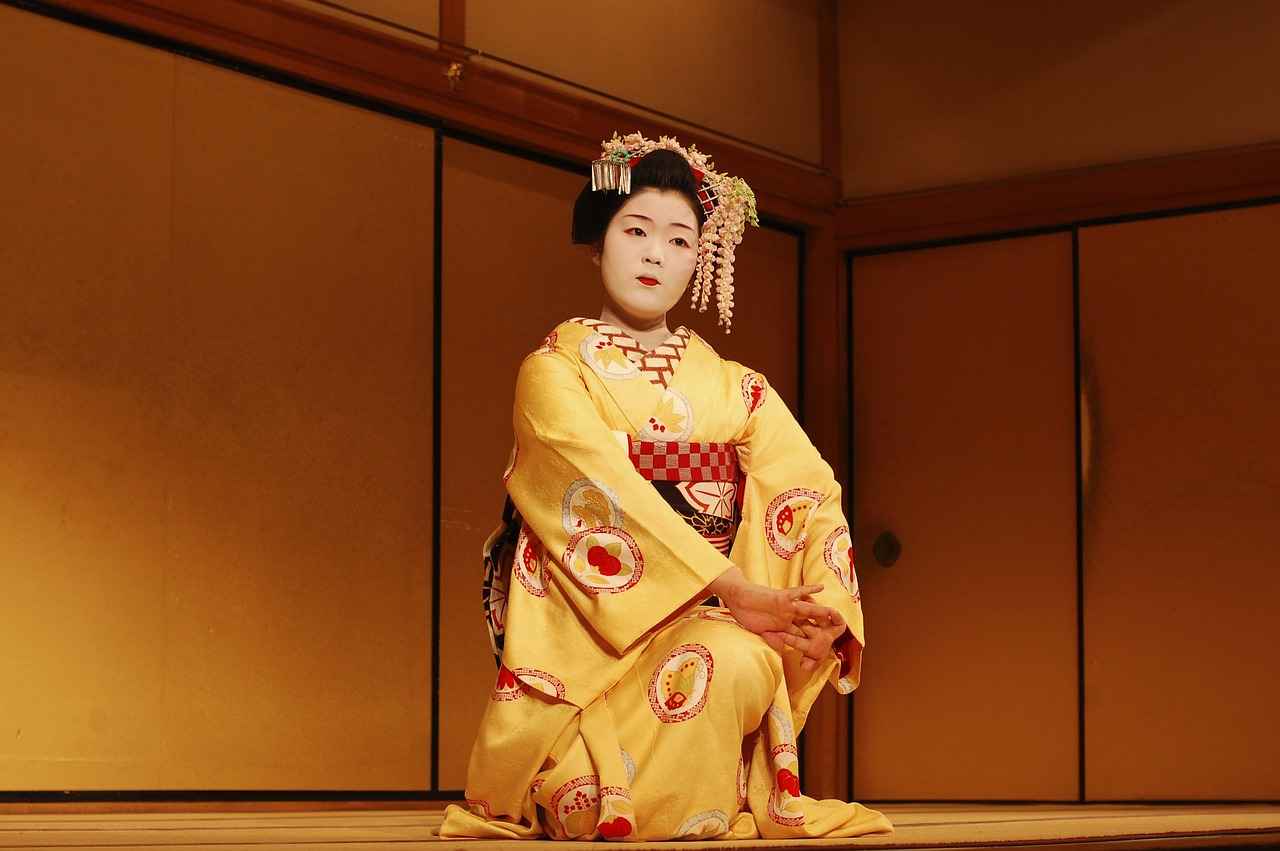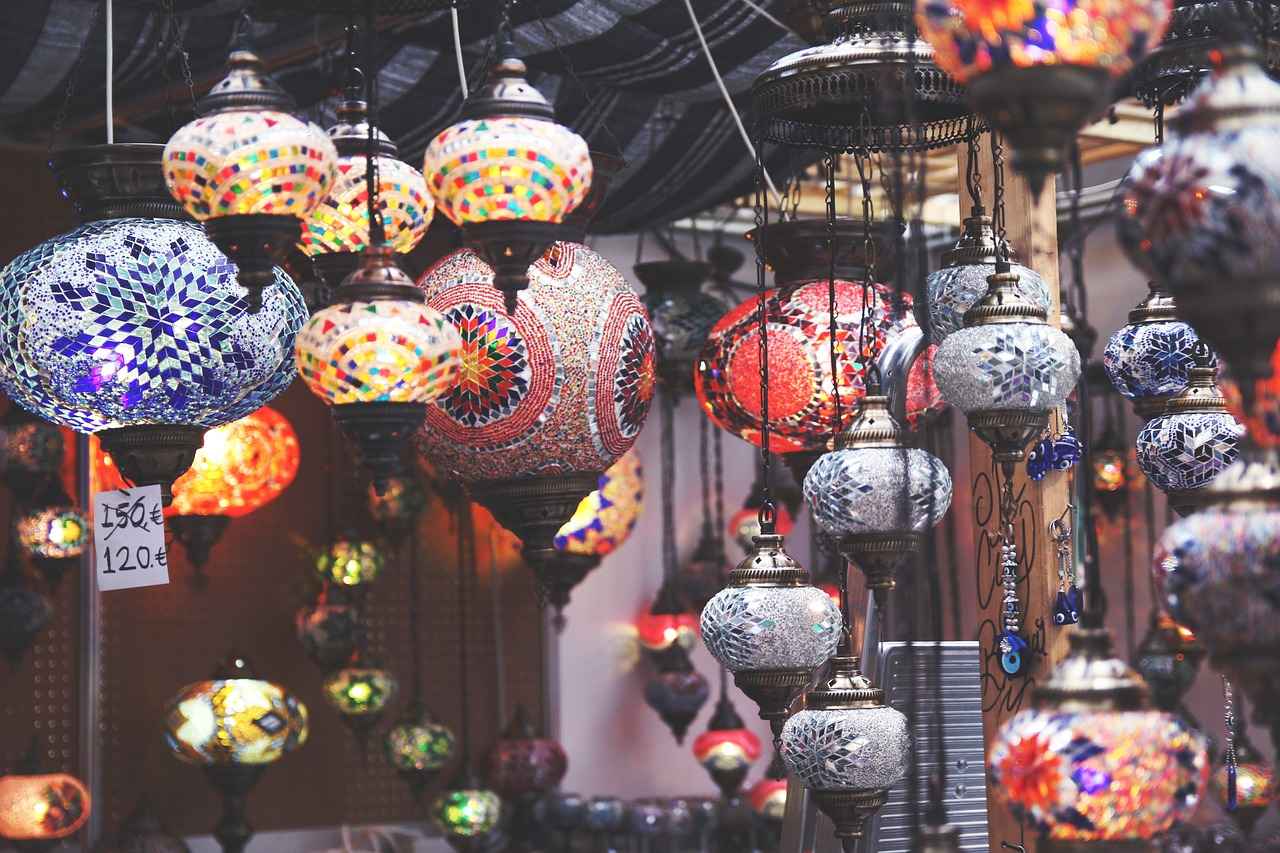This article explores the rich history, diverse styles, and profound cultural significance of traditional Japanese kimono clothing, providing valuable insights for both enthusiasts and newcomers.
What is a Kimono?
The kimono is a traditional Japanese garment known for its long sleeves and wrap-around design. It is a symbol of Japan’s cultural heritage and aesthetic values, representing a unique blend of artistry and functionality.
History of the Kimono
The origins of the kimono trace back to the Heian period, evolving through various Japanese eras. Each period brought changes in style, reflecting social status and regional identity.
- Kimono in the Heian Period
- Layering Techniques
- Color Symbolism
During the Heian period, kimonos were often elaborate and layered. This era emphasized intricate craftsmanship and the art of color coordination.
Layering, known as jūni-hitoe, involved wearing multiple garments. This technique showcased wealth and sophistication among the aristocracy.
Colors in kimono design carry significant meanings, with specific hues representing seasons, emotions, and social status.
Modern Evolution of Kimono
Today, kimonos have adapted to contemporary fashion trends while retaining their traditional essence. They are often worn during special events and ceremonies, bridging the past with the present.
Types of Kimono
There are various types of kimonos, each designed for specific occasions:
- Formal Kimonos: Such as tomesode and furisode, worn during weddings and ceremonies.
- Casual Kimonos: Like yukata, made from lighter fabrics for summer festivals.
Kimono Fabrics and Patterns
The choice of fabric and pattern is crucial in kimono design:
- Silk Kimonos: Renowned for their luxurious feel and vibrant colors.
- Cotton and Synthetic Kimonos: More affordable options for casual wear.
How to Wear a Kimono
Wearing a kimono involves specific techniques, including the proper wrapping and tying of the obi:
- Basic Kimono Wearing Steps: Selecting the right size, layering correctly, and securing the obi.
- Accessorizing Your Kimono: Enhancing the look with accessories like obiage and obijime.
Kimono Care and Maintenance
Proper care is essential to preserve a kimono’s beauty:
- Cleaning Techniques: Often requires professional dry cleaning or gentle hand washing.
- Storage Tips: Use breathable garment bags and avoid direct sunlight.
The Cultural Significance of Kimono
The kimono transcends mere clothing; it symbolizes Japanese identity, embodying cultural values and the artistry of textile craftsmanship.
- Kimono in Japanese Festivals: Worn to celebrate heritage during various festivals.
- Kimono as a Symbol of Identity: Represents the nation’s history and connection to cultural practices.
Conclusion: Embracing the Kimono Tradition
Understanding the kimono’s significance enriches appreciation for this traditional attire, fostering a deeper connection to Japan’s cultural heritage and artistry.

What is a Kimono?
The kimono is a traditional Japanese garment that has become a symbol of Japan’s rich cultural heritage. Characterized by its long sleeves and distinctive wrap-around design, the kimono is not just a piece of clothing but a representation of Japan’s aesthetic values and social traditions.
Originating from the Heian period, the kimono has evolved over the centuries, adapting to the changing tastes and social norms of Japanese society. It serves as a canvas for artistic expression, showcasing intricate patterns, colors, and textures that often reflect the wearer’s personality, status, and the season.
The kimono is typically made from various fabrics, including silk, cotton, and synthetic materials, each offering unique characteristics that cater to different occasions. For instance, silk kimonos are often reserved for formal events due to their luxurious feel and vibrant colors, while cotton kimonos, like the yukata, are popular for casual summer wear.
Moreover, the kimono’s design elements are rich in symbolism. Colors and patterns can convey messages about the wearer’s age, marital status, and even the time of year. This makes the kimono a profound representation of Japanese culture, where every detail is significant.
Today, while modern fashion trends have influenced the way kimonos are worn, they still hold a special place in Japanese society. Whether worn during traditional ceremonies, weddings, or festivals, the kimono remains a beloved garment that connects individuals to their cultural roots.
In conclusion, the kimono is more than just traditional attire; it is a living testament to Japan’s history and artistry, embodying a blend of tradition and modernity. Understanding its significance allows for a deeper appreciation of this iconic garment.
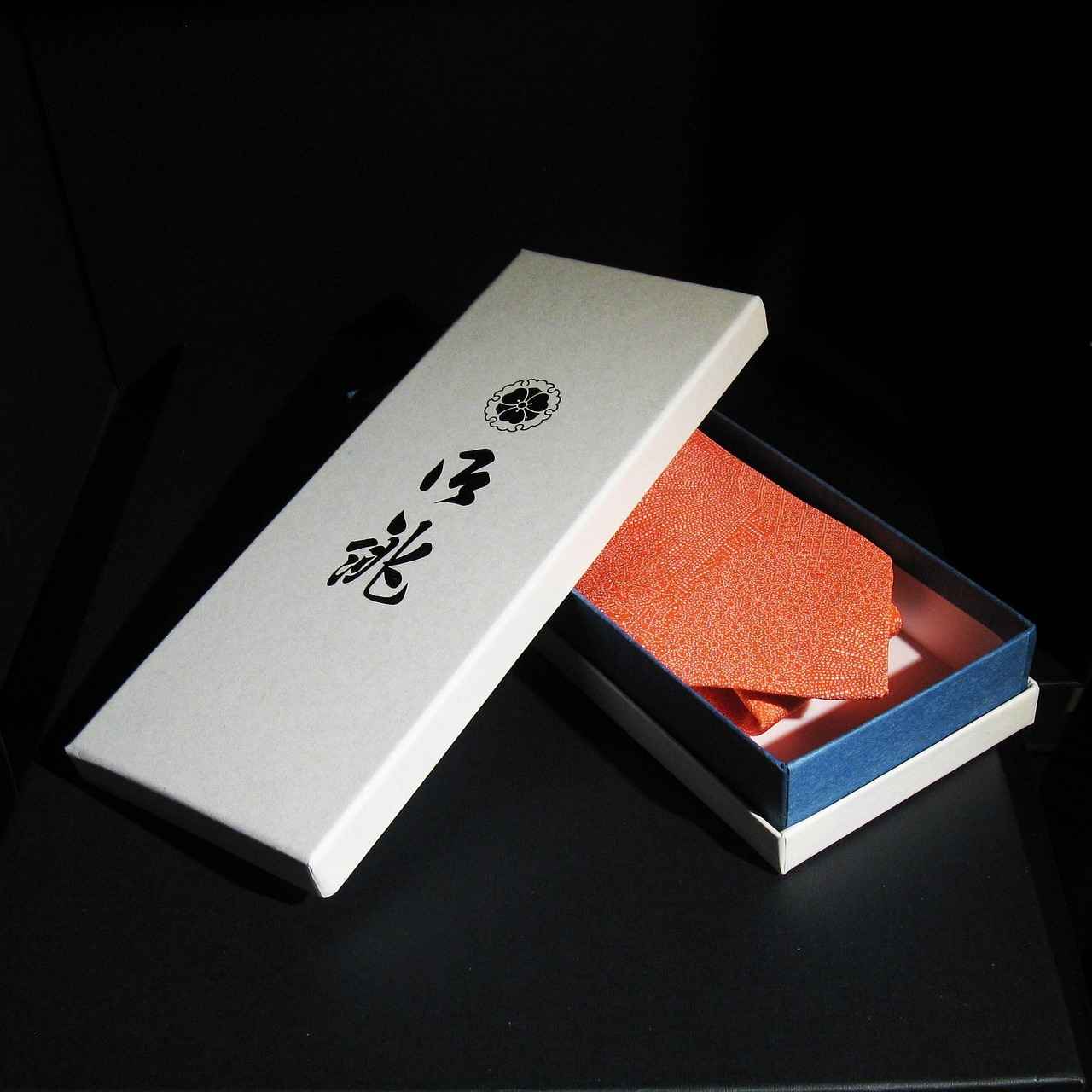
History of the Kimono
The history of the kimono is a fascinating journey that reflects the evolution of Japanese culture and society. Originating in the Heian period (794-1185), the kimono has undergone significant transformations in both style and meaning throughout the centuries. This iconic garment is not merely a piece of clothing but a profound representation of social status, regional identity, and the intricate artistry of Japanese craftsmanship.
During the Heian period, kimonos were characterized by their elaborate designs and layering techniques. The aristocracy often wore multiple layers, known as jūni-hitoe, which showcased their wealth and sophistication. Each layer was meticulously chosen for its color and texture, reflecting the wearer’s status and the seasonal context. The importance of color symbolism in kimono design cannot be overstated; specific colors were associated with various meanings, such as purity, elegance, and even emotional states.
As Japan transitioned through various eras, including the Kamakura, Muromachi, and Edo periods, the kimono continued to evolve. The Edo period (1603-1868) saw the rise of distinct styles, with the introduction of vibrant patterns and motifs that celebrated nature and folklore. These designs often conveyed messages about the wearer’s personality and social standing.
In modern Japan, the kimono retains its cultural significance, although its daily use has diminished. Today, it is primarily worn during special occasions such as weddings, festivals, and ceremonies. The contemporary kimono has adapted to modern fashion trends while preserving traditional elements, making it a beloved garment among both older generations and younger enthusiasts.
In conclusion, the history of the kimono is a rich tapestry woven with cultural significance, artistry, and social commentary. Understanding its evolution allows us to appreciate not just a garment, but a vital part of Japan’s heritage.
Kimono in the Heian Period
During the Heian period (794-1185), the kimono emerged not just as a garment, but as a canvas for expressing cultural identity and artistic expression. The era is renowned for its sophisticated aesthetics, and the kimono reflected this through its elaborate designs and meticulous craftsmanship.
Kimonos from this period were characterized by their layering techniques, known as jūni-hitoe, which involved wearing multiple layers of garments. This practice was not only a display of wealth but also a means to showcase the intricate artistry involved in each piece. The layering allowed for a rich interplay of colors and patterns, creating a visual feast that was both striking and meaningful.
Color coordination played a crucial role in kimono design during the Heian period. Each color was imbued with specific meanings, often linked to the seasons or emotions. For example:
- Red symbolized happiness and good fortune.
- Blue represented tranquility and calmness.
- Yellow was associated with courage and strength.
This careful attention to color was not merely aesthetic; it indicated the wearer’s social status and the occasion for which the kimono was worn. Aristocrats often donned kimonos with vibrant hues and intricate designs, while simpler patterns were reserved for the less affluent.
In conclusion, the kimono during the Heian period was a reflection of the cultural sophistication of the time. Its elaborate designs and the significance of color coordination highlight not only the artistry of the garment but also the values and traditions of Japanese society. Understanding these elements provides deeper insight into the enduring legacy of the kimono in Japan’s cultural history.
Layering Techniques
in traditional Japanese kimono wearing, known as jūni-hitoe, are a fascinating aspect of this cultural attire. This method involves the artful combination of multiple garments, each contributing to a visually stunning and culturally rich ensemble. The layering process not only showcases the wearer’s sophistication and wealth but also reflects the intricate artistry of Japanese textile traditions.
In the context of kimono, layering serves several purposes:
- Aesthetic Appeal: Each layer can be made from different fabrics and colors, allowing for unique combinations that enhance the overall look.
- Seasonal Adaptation: Layering enables the wearer to adjust their outfit according to the changing seasons, providing warmth in winter and breathability in summer.
- Social Significance: The number of layers worn can indicate social status, with more layers typically reserved for the aristocracy and special occasions.
Historically, the Heian Period is particularly noted for its elaborate layering techniques. During this era, the jūni-hitoe consisted of twelve layers, each carefully chosen for color and texture. This complexity not only displayed the wearer’s wealth but also their understanding of color symbolism, as each hue conveyed specific meanings tied to seasons, emotions, and social roles.
Today, while modern fashion has simplified kimono styles, the essence of layering remains significant during special events, such as weddings and traditional festivals. Enthusiasts and cultural practitioners continue to explore these techniques, ensuring that the art of layering in kimono wearing is preserved and celebrated.
In conclusion, understanding the of kimono not only enriches one’s appreciation for this traditional garment but also connects individuals to the profound cultural heritage of Japan.
jūni-hitoe,
The Complete Guide to Jūni-Hitoe
This article explores the traditional Japanese layering technique known as jūni-hitoe, its historical significance, and its cultural relevance today. Understanding this intricate garment style provides insights into Japan’s rich textile heritage.
What is Jūni-Hitoe?
Jūni-hitoe refers to a traditional Japanese layering technique that involves wearing multiple kimono garments at once. This style was particularly popular during the Heian period and is characterized by its elaborate and colorful arrangements.
Historical Context of Jūni-Hitoe
The technique originated in the Heian period (794-1185) when aristocrats showcased their wealth and status through intricate layering. Each layer of fabric signified different meanings and was often color-coordinated to reflect the seasons and occasions.
- Layering Techniques: The jūni-hitoe style typically includes twelve layers of garments, each contributing to the overall aesthetic.
- Color Symbolism: Colors were chosen based on their cultural significance; for instance, red might symbolize good fortune, while blue could represent calmness.
Modern Interpretations of Jūni-Hitoe
Today, while the traditional jūni-hitoe is not commonly worn, its influence can be seen in modern kimono styles, especially during festivals and cultural events. Designers often incorporate elements of this layering technique into contemporary fashion.
How to Appreciate Jūni-Hitoe
To fully appreciate jūni-hitoe, one must understand the artistry involved in selecting fabrics and colors. Visitors to Japan are encouraged to experience cultural festivals where traditional garments are worn, providing a living context for this historical style.
Conclusion: The Cultural Legacy of Jūni-Hitoe
Jūni-hitoe remains a significant part of Japanese cultural heritage, symbolizing the artistry and meticulous craftsmanship of traditional garment-making. Its legacy continues to inspire both fashion and cultural appreciation in modern Japan.
involved multiple garments worn simultaneously, demonstrating wealth and sophistication among the aristocracy.
The Complete Guide to Traditional Japanese Kimono Clothing
This article delves into the rich history, styles, and cultural significance of traditional Japanese kimono clothing, offering insights for enthusiasts and newcomers alike.
What is a Kimono?
The kimono is a traditional Japanese garment characterized by its long sleeves and wrap-around design, symbolizing Japan’s cultural heritage and aesthetic values.
History of the Kimono
The history of the kimono dates back to the Heian period, evolving in style and significance through various Japanese eras, reflecting social status and regional identity.
Kimono in the Heian Period
During the Heian period, kimonos were often elaborate and layered, showcasing the intricate craftsmanship and the importance of color coordination in Japanese culture.
Layering Techniques
Layering techniques, known as jūni-hitoe, involved multiple garments worn simultaneously, demonstrating wealth and sophistication among the aristocracy.
Color Symbolism
Colors in kimono design held significant meanings, with specific hues representing seasons, emotions, and social status, influencing the choice of attire for various occasions.
Modern Evolution of Kimono
In contemporary Japan, the kimono has adapted to modern fashion trends while retaining its traditional essence, often worn during special events and ceremonies.
Types of Kimono
- Formal Kimonos: Formal kimonos, such as tomesode and furisode, are typically worn during weddings and ceremonies, characterized by their intricate designs and vibrant colors.
- Casual Kimonos: Casual kimonos, like yukata, are made from lighter fabrics and are commonly worn during summer festivals, offering comfort and style in warmer weather.
Kimono Fabrics and Patterns
The choice of fabric and pattern in kimono design is crucial, with silk, cotton, and synthetic materials used, each offering unique aesthetics and comfort.
How to Wear a Kimono
Wearing a kimono involves specific techniques, including proper wrapping and tying of the obi, which can be intricate but adds to the garment’s elegance.
Kimono Care and Maintenance
Proper care and maintenance are essential to preserve the beauty and longevity of a kimono, involving specific cleaning and storage techniques.
The Cultural Significance of Kimono
The kimono is not merely a garment but a symbol of Japanese identity, representing cultural values, traditions, and the artistry of textile craftsmanship.
Conclusion: Embracing the Kimono Tradition
Understanding the kimono’s significance enriches the appreciation of this traditional attire, encouraging a deeper connection to Japan’s cultural heritage and artistry.
Color Symbolism
in kimono design is a fascinating aspect of Japanese culture that intertwines aesthetics with profound meanings. Each hue carries specific connotations, reflecting various elements such as seasons, emotions, and social status. This intricate color coding has historically influenced the choice of attire for a range of occasions, from formal ceremonies to casual gatherings.
For instance, the color red is often associated with happiness and good fortune, making it a popular choice for celebratory events like weddings. In contrast, black is typically reserved for more somber occasions, symbolizing mourning and respect. Similarly, shades of blue and green are frequently linked to tranquility and nature, representing a sense of calm and harmony.
Moreover, specific colors can signify different seasons. For example, pink is often worn during spring, symbolizing the blossoming of cherry blossoms, while gold and orange reflect the warmth and vibrancy of autumn. This seasonal color association enhances the wearer’s connection to nature and the changing times of the year.
In terms of social status, the choice of color and its intensity can indicate one’s rank or wealth. Rich, vibrant colors and elaborate patterns were typically worn by the aristocracy, showcasing their high status and refined taste. Conversely, simpler, muted tones were more common among the lower classes, reflecting their everyday lifestyle.
Understanding these color meanings adds a rich layer of depth to the appreciation of kimono design. It encourages wearers and admirers alike to consider not just the beauty of the garment but also the cultural narratives woven into its fabric.
Modern Evolution of Kimono
The kimono, a traditional symbol of Japanese culture, has undergone a fascinating transformation in contemporary Japan. While it retains its traditional essence, the kimono has adapted to fit modern fashion trends and lifestyles. This evolution reflects the dynamic nature of culture and fashion, showcasing how traditional garments can coexist with contemporary styles.
Today, kimonos are not just reserved for formal occasions or ceremonies. They are increasingly being integrated into daily wear and casual settings. Designers are experimenting with innovative fabrics and designs, creating pieces that appeal to younger generations while still honoring the garment’s rich history. For instance, modern kimonos may feature bold colors and unique patterns that resonate with current fashion sensibilities, making them a popular choice for various occasions.
Moreover, the rise of kimono-inspired fashion has led to the creation of hybrid garments that blend traditional kimono elements with Western styles. This fusion not only broadens the appeal of the kimono but also encourages a new appreciation for its cultural significance. Many young people now wear kimonos to festivals, parties, and even casual outings, showcasing their versatility.
Special events such as weddings and cultural ceremonies still see the traditional kimono in its most authentic form. However, even in these settings, modern interpretations are becoming more common, with brides incorporating contemporary designs into their wedding kimonos. This adaptability highlights the kimono’s role as a living piece of culture that evolves with society.
In conclusion, the modern evolution of the kimono represents a beautiful blend of tradition and innovation. As it continues to adapt to contemporary fashion, the kimono remains a vital symbol of Japanese identity and cultural heritage, proving that tradition can thrive in a modern world.
Types of Kimono
The kimono is a quintessential symbol of Japanese culture, with various styles tailored for different occasions. Understanding these types not only enhances appreciation for this traditional attire but also aids in choosing the right kimono for specific events.
- Formal Kimonos: These are typically worn during significant ceremonies such as weddings and formal gatherings. Notable types include:
- Tomesode: A formal kimono characterized by its elegant designs, often featuring patterns only below the waist. It is commonly worn by married women.
- Furisode: Known for its long sleeves, this kimono is usually worn by young, unmarried women during celebrations and special occasions.
- Casual Kimonos: Designed for everyday wear, these kimonos are made from lighter materials and are perfect for informal gatherings. Examples include:
- Yukata: A cotton kimono typically worn in summer, especially during festivals. It is lightweight and comfortable, making it ideal for warm weather.
- Hifu: A more casual kimono that can be worn for everyday activities, often made of cotton or synthetic fabrics.
- Seasonal Kimonos: Some kimonos are designed specifically for certain seasons, showcasing seasonal motifs and colors. For example:
- Haneri: A type of kimono collar that reflects the season’s colors and patterns, adding a personal touch to the outfit.
- Shinji: These kimonos often feature patterns that celebrate seasonal changes, such as cherry blossoms in spring.
Each type of kimono serves a unique purpose, reflecting the rich tapestry of Japanese culture. Whether for formal events or casual outings, the diversity in kimono styles allows individuals to express their personal style while honoring tradition.
Formal Kimonos
hold a prestigious place in Japanese culture, representing elegance and sophistication. These garments are often worn during significant events such as weddings, tea ceremonies, and formal gatherings. The intricate designs and vibrant colors of formal kimonos are not just for aesthetic appeal; they also carry deep cultural meanings and showcase the wearer’s social status and personal taste.
Among the various types of formal kimonos, two stand out: tomesode and furisode. Each type serves a specific purpose and is distinguished by its design and the occasions for which it is deemed appropriate.
- Tomesode: Typically worn by married women, tomesode are characterized by their elegant patterns and often feature designs only on the lower part of the kimono. They are usually made from luxurious fabrics like silk and are worn during formal events, especially weddings.
- Furisode: In contrast, furisode are worn by unmarried women and are known for their long, flowing sleeves. These kimonos are vibrant and elaborate, making them popular choices for coming-of-age ceremonies and other celebratory occasions.
The choice of fabric plays a crucial role in the overall appearance of formal kimonos. High-quality silk is commonly used, prized for its luxurious feel and ability to display intricate patterns and colors. Additionally, the obi, a wide belt worn with the kimono, is often elaborately tied and can significantly enhance the outfit’s elegance.
Understanding the cultural significance of formal kimonos is essential for appreciating their beauty. They are more than just clothing; they are a symbol of heritage and a testament to the artistry of traditional Japanese craftsmanship. Wearing a formal kimono is an experience that connects individuals to centuries of cultural history.
In conclusion, formal kimonos like tomesode and furisode are integral to Japanese culture, embodying tradition, elegance, and social significance. Whether worn during a wedding or a ceremonial event, these garments are a celebration of Japan’s rich heritage.
tomesode
The Complete Guide to Tomesode: A Traditional Japanese Kimono
The is a formal type of kimono worn primarily by married women in Japan. This elegant garment is characterized by its beautiful designs and is often worn during significant life events such as weddings and ceremonies. This article will explore the features, history, and cultural significance of the tomesode, providing a comprehensive overview for enthusiasts and those new to traditional Japanese attire.
The tomesode is a formal kimono distinguished by its short sleeves and intricate patterns, primarily featuring designs at the bottom. It is often made of luxurious fabrics like silk and is considered one of the most prestigious types of kimono.
The history of tomesode dates back to the Edo period, where it developed as a symbol of status and elegance. Originally worn by noblewomen, it has evolved into a garment representing tradition and cultural heritage.
- Shiro-tomesode: A white tomesode, typically worn at weddings.
- Kuro-tomesode: A black tomesode, commonly worn at formal events.
- Iro-tomesode: A colored tomesode, suitable for various occasions.
Wearing a tomesode involves specific techniques that enhance its elegance. The obi (sash) is tied in a distinctive knot, and accessories such as obiage and obijime are often added to complete the look.
The tomesode is more than just clothing; it represents Japanese identity and cultural values. Wearing a tomesode at important events signifies respect for tradition and family heritage.
Understanding the significance of the tomesode enriches the appreciation of this traditional garment. Its beauty and cultural importance continue to resonate in modern Japan, making it a cherished part of the nation’s heritage.
and
The Complete Guide to Traditional Japanese Kimono Clothing
This article delves into the rich history, styles, and cultural significance of traditional Japanese kimono clothing, offering insights for enthusiasts and newcomers alike.
What is a Kimono?
The kimono is a traditional Japanese garment characterized by its long sleeves and wrap-around design, symbolizing Japan’s cultural heritage and aesthetic values.
History of the Kimono
The history of the kimono dates back to the Heian period, evolving in style and significance through various Japanese eras, reflecting social status and regional identity.
Kimono in the Heian Period
During the Heian period, kimonos were often elaborate and layered, showcasing the intricate craftsmanship and the importance of color coordination in Japanese culture.
Layering Techniques
Layering techniques, known as jūni-hitoe, involved multiple garments worn simultaneously, demonstrating wealth and sophistication among the aristocracy.
Color Symbolism
Colors in kimono design held significant meanings, with specific hues representing seasons, emotions, and social status, influencing the choice of attire for various occasions.
Modern Evolution of Kimono
In contemporary Japan, the kimono has adapted to modern fashion trends while retaining its traditional essence, often worn during special events and ceremonies.
Types of Kimono
- Formal Kimonos: Formal kimonos, such as tomesode and furisode, are typically worn during weddings and ceremonies, characterized by their intricate designs and vibrant colors.
- Casual Kimonos: Casual kimonos, like yukata, are made from lighter fabrics and are commonly worn during summer festivals, offering comfort and style in warmer weather.
Kimono Fabrics and Patterns
The choice of fabric and pattern in kimono design is crucial, with silk, cotton, and synthetic materials used, each offering unique aesthetics and comfort.
Silk Kimonos
Silk kimonos are renowned for their luxurious feel and vibrant colors, often featuring intricate embroidery and hand-painted designs, making them a popular choice for formal occasions.
Cotton and Synthetic Kimonos
Cotton and synthetic kimonos provide a more affordable and practical option, ideal for casual wear and everyday use, while still embracing traditional designs.
How to Wear a Kimono
Wearing a kimono involves specific techniques, including proper wrapping and tying of the obi, which can be intricate but adds to the garment’s elegance.
Basic Kimono Wearing Steps
- Selecting the right size
- Layering garments correctly
- Securing the obi with a bow
Accessorizing Your Kimono
Accessories such as obiage, obijime, and haneri enhance the kimono’s look, allowing for personal expression while adhering to traditional styling conventions.
Kimono Care and Maintenance
Proper care and maintenance are essential to preserve the beauty and longevity of a kimono, involving specific cleaning and storage techniques.
Cleaning Techniques
Cleaning a kimono requires careful handling, often involving professional dry cleaning or gentle hand washing to maintain fabric integrity and color vibrancy.
Storage Tips
Storing a kimono properly involves using breathable garment bags and avoiding direct sunlight to prevent fading and fabric deterioration over time.
The Cultural Significance of Kimono
The kimono is not merely a garment but a symbol of Japanese identity, representing cultural values, traditions, and the artistry of textile craftsmanship.
Kimono in Japanese Festivals
Kimonos play a central role in various Japanese festivals, where they are worn to celebrate heritage, showcasing traditional designs and vibrant colors.
Kimono as a Symbol of Identity
The kimono serves as a powerful symbol of Japanese identity, embodying the nation’s history, artistry, and the deep connection to cultural practices and rituals.
Conclusion: Embracing the Kimono Tradition
Understanding the kimono’s significance enriches the appreciation of this traditional attire, encouraging a deeper connection to Japan’s cultural heritage and artistry.
furisode,
The Complete Guide to Furisode: A Traditional Japanese Kimono
The furisode is a stunning and formal type of kimono characterized by its long, flowing sleeves. Traditionally worn by young women, it symbolizes youth and elegance, making it a popular choice for significant events such as weddings and coming-of-age ceremonies.
What is Furisode?
The term “furisode” translates to “swinging sleeves,” referring to the garment’s distinctive long sleeves that can reach up to 100 cm in length. This style is often adorned with intricate designs and vibrant colors, reflecting the wearer’s personality and the occasion.
History of Furisode
The furisode has its roots in the Edo period (1603-1868), evolving from earlier kimono styles. Initially, it was worn by unmarried women as a sign of their status and youth. Over the years, the designs and patterns have become more elaborate, showcasing the artistry of Japanese textile craftsmanship.
Types of Furisode
- Formal Furisode: Typically worn during weddings and formal ceremonies, featuring rich colors and detailed motifs.
- Casual Furisode: Often worn at less formal gatherings, these may have simpler designs and lighter fabrics.
How to Wear a Furisode
Wearing a furisode involves several steps:
- Select the right size and style based on the occasion.
- Layer the kimono correctly with an undergarment.
- Secure the obi (sash) with a decorative bow at the back.
Accessorizing Your Furisode
Accessories play a crucial role in enhancing the overall look of a furisode. Common accessories include:
- Obiage: A decorative piece worn under the obi.
- Obijime: A cord that secures the obi in place.
- Haneri: A collar that adds a pop of color and style.
Conclusion: Embracing the Elegance of Furisode
The furisode is more than just a garment; it embodies tradition, artistry, and cultural significance in Japan. Understanding its history and proper styling can deepen one’s appreciation for this beautiful piece of clothing.
are typically worn during weddings and ceremonies, characterized by their intricate designs and vibrant colors.
The Complete Guide to Traditional Japanese Kimono Clothing
This article delves into the rich history, styles, and cultural significance of traditional Japanese kimono clothing, offering insights for enthusiasts and newcomers alike.
What is a Kimono?
The kimono is a traditional Japanese garment characterized by its long sleeves and wrap-around design, symbolizing Japan’s cultural heritage and aesthetic values.
History of the Kimono
The history of the kimono dates back to the Heian period, evolving in style and significance through various Japanese eras, reflecting social status and regional identity.
Kimono in the Heian Period
During the Heian period, kimonos were often elaborate and layered, showcasing the intricate craftsmanship and the importance of color coordination in Japanese culture.
Layering Techniques
Layering techniques, known as jūni-hitoe, involved multiple garments worn simultaneously, demonstrating wealth and sophistication among the aristocracy.
Color Symbolism
Colors in kimono design held significant meanings, with specific hues representing seasons, emotions, and social status, influencing the choice of attire for various occasions.
Modern Evolution of Kimono
In contemporary Japan, the kimono has adapted to modern fashion trends while retaining its traditional essence, often worn during special events and ceremonies.
Types of Kimono
- Formal Kimonos: Formal kimonos, such as tomesode and furisode, are typically worn during weddings and ceremonies, characterized by their intricate designs and vibrant colors.
- Casual Kimonos: Casual kimonos, like yukata, are made from lighter fabrics and are commonly worn during summer festivals, offering comfort and style in warmer weather.
Kimono Fabrics and Patterns
The choice of fabric and pattern in kimono design is crucial, with silk, cotton, and synthetic materials used, each offering unique aesthetics and comfort.
Silk Kimonos
Silk kimonos are renowned for their luxurious feel and vibrant colors, often featuring intricate embroidery and hand-painted designs, making them a popular choice for formal occasions.
Cotton and Synthetic Kimonos
Cotton and synthetic kimonos provide a more affordable and practical option, ideal for casual wear and everyday use, while still embracing traditional designs.
How to Wear a Kimono
Wearing a kimono involves specific techniques, including proper wrapping and tying of the obi, which can be intricate but adds to the garment’s elegance.
Basic Kimono Wearing Steps
- Selecting the right size
- Layering garments correctly
- Securing the obi with a bow
Accessorizing Your Kimono
Accessories such as obiage, obijime, and haneri enhance the kimono’s look, allowing for personal expression while adhering to traditional styling conventions.
Kimono Care and Maintenance
Proper care and maintenance are essential to preserve the beauty and longevity of a kimono, involving specific cleaning and storage techniques.
Cleaning Techniques
Cleaning a kimono requires careful handling, often involving professional dry cleaning or gentle hand washing to maintain fabric integrity and color vibrancy.
Storage Tips
Storing a kimono properly involves using breathable garment bags and avoiding direct sunlight to prevent fading and fabric deterioration over time.
The Cultural Significance of Kimono
The kimono is not merely a garment but a symbol of Japanese identity, representing cultural values, traditions, and the artistry of textile craftsmanship.
Kimono in Japanese Festivals
Kimonos play a central role in various Japanese festivals, where they are worn to celebrate heritage, showcasing traditional designs and vibrant colors.
Kimono as a Symbol of Identity
The kimono serves as a powerful symbol of Japanese identity, embodying the nation’s history, artistry, and the deep connection to cultural practices and rituals.
Conclusion: Embracing the Kimono Tradition
Understanding the kimono’s significance enriches the appreciation of this traditional attire, encouraging a deeper connection to Japan’s cultural heritage and artistry.
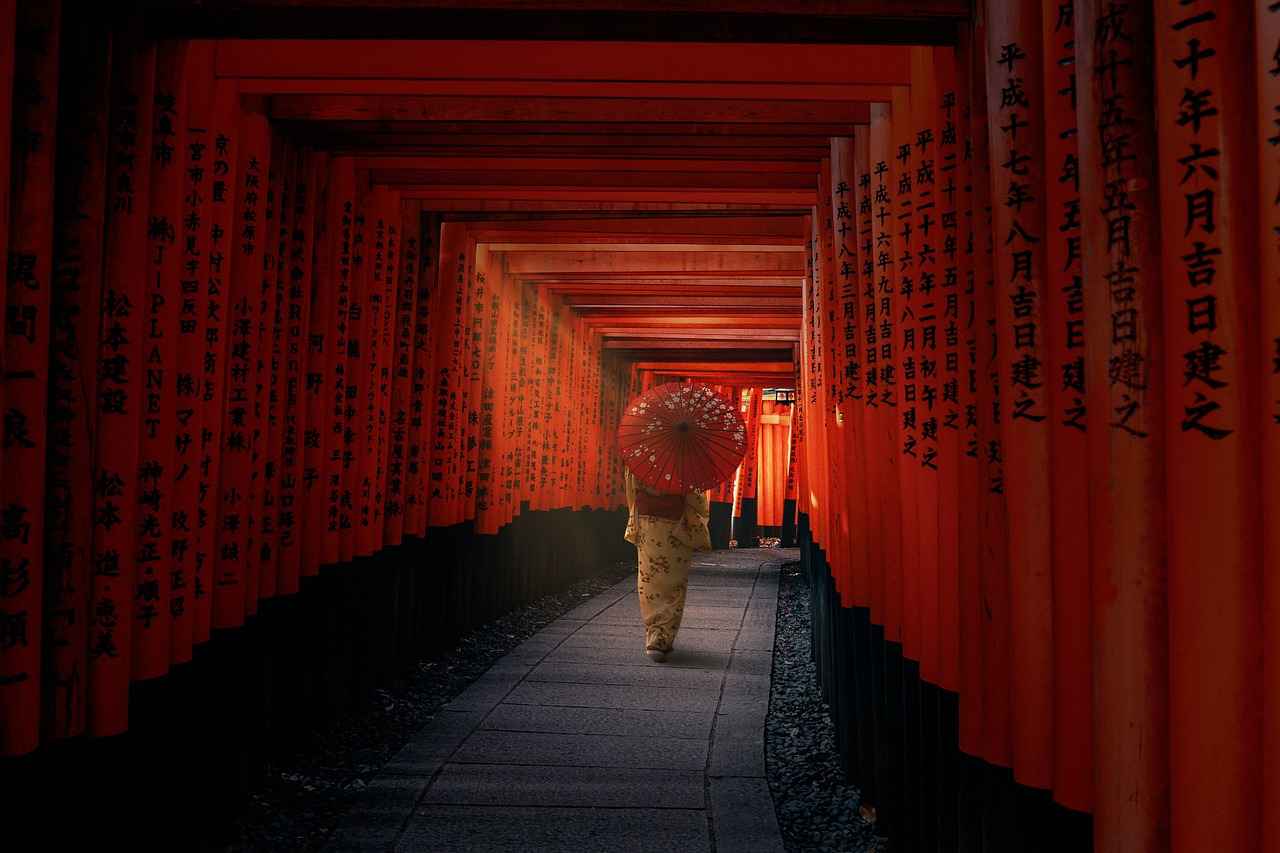
Casual Kimonos
represent a beautiful blend of tradition and modernity, making them a popular choice for various occasions, especially in warmer weather. Unlike their formal counterparts, casual kimonos are designed for comfort and ease of wear, allowing individuals to embrace the elegance of traditional Japanese clothing without the complexity of formal attire.
One of the most recognized types of casual kimono is the yukata. Typically made from lightweight cotton, yukatas are often adorned with vibrant patterns and colors, making them ideal for summer festivals and casual outings. The simplicity of the yukata allows for easy dressing, which is perfect for those new to kimono-wearing.
- Comfortable Wear: Casual kimonos are designed with breathable fabrics, making them suitable for hot weather.
- Versatile Styles: Available in a variety of patterns, colors, and styles, casual kimonos can be worn by anyone, regardless of age or gender.
- Easy Maintenance: Unlike formal kimonos that require delicate care, casual kimonos can often be machine washed, making them practical for everyday use.
When accessorizing a casual kimono, consider adding a light obi or a simple sash to enhance the outfit without overwhelming the overall look. Accessories such as geta (traditional wooden sandals) or zori (flat sandals) complement the casual kimono beautifully.
In summary, casual kimonos like yukatas offer a fantastic way to enjoy traditional Japanese fashion while prioritizing comfort and practicality. Whether you are attending a summer festival or simply enjoying a leisurely day out, a casual kimono is an excellent choice that embodies the spirit of Japanese culture.
yukata,
Yukata: The Traditional Japanese Summer Garment
The yukata is a lightweight, casual garment that embodies the essence of Japanese summer attire. Traditionally made from cotton or synthetic fabric, it is characterized by its simple design and vibrant patterns, making it a popular choice during warm weather and festivals.
What is a Yukata?
A yukata is a kimono-style robe that is typically worn in the summer months. Unlike formal kimonos, yukatas are unlined and often feature colorful designs that reflect seasonal themes. They are usually worn during summer festivals, fireworks displays, and other casual events.
History of the Yukata
The yukata has its roots in the Heian period when it was used as a bathrobe. Over time, it evolved into a fashionable garment worn during summer festivities. Its popularity soared during the Edo period, where it became associated with leisure and relaxation.
Types of Yukata
- Men’s Yukata: Typically more subdued in color and pattern, often featuring dark hues.
- Women’s Yukata: Known for their vibrant colors and floral patterns, often adorned with obi (sashes).
- Children’s Yukata: Available in playful designs, making them a favorite for family outings.
How to Wear a Yukata
Wearing a yukata involves a few simple steps:
- Start with the yukata unwrapped.
- Wrap the right side over the left, ensuring the left side is on top.
- Secure with an obi, tying it at the waist.
Accessorizing Your Yukata
To complete the look, consider adding accessories such as:
- Obi: A decorative sash that adds flair.
- Geta: Traditional wooden sandals that elevate the outfit.
- Hana Kanzashi: Floral hairpins that enhance the overall appearance.
Conclusion: Embracing the Yukata Tradition
The yukata is more than just a garment; it is a celebration of Japanese culture and summer traditions. Its rich history and vibrant designs continue to captivate people, making it an enduring symbol of Japanese heritage.
are made from lighter fabrics and are commonly worn during summer festivals, offering comfort and style in warmer weather.
Kimono: A Symbol of Tradition and Comfort
The kimono is a traditional Japanese garment that embodies the rich cultural heritage of Japan. Among the various types, the yukata stands out as a popular choice, especially during the summer months. This article explores the significance of yukata, its characteristics, and its role in Japanese festivals.
What is a Yukata?
A yukata is a casual summer kimono made from lightweight cotton, designed for comfort and breathability. It is often worn during summer festivals, fireworks displays, and other casual outdoor events. With its vibrant colors and patterns, the yukata is a favorite among both locals and tourists.
Characteristics of Yukata
- Fabric: Typically made from cotton, making it lightweight and suitable for warm weather.
- Design: Features colorful prints, often inspired by nature, such as flowers and waves.
- Style: The yukata is easy to wear, with a simple wrap-around design and a sash called obi.
Wearing a Yukata
Wearing a yukata involves a few simple steps:
- Select the right size for comfort.
- Wrap the garment around your body, left side over right.
- Secure the obi in place to complete the look.
Accessorizing Your Yukata
To enhance the yukata’s appearance, accessories such as obiage and haneri can be added, allowing for personal expression while maintaining traditional aesthetics.
The Cultural Significance of Yukata
Yukatas are not just fashion statements; they are deeply rooted in Japanese culture. They are commonly worn during festivals such as Hanabi (fireworks festivals) and Obon, where people celebrate their heritage and enjoy the summer nights.
Conclusion
The yukata represents a blend of comfort, tradition, and cultural significance. Embracing this attire not only connects individuals to Japan’s rich history but also allows for a unique expression of personal style during the warm summer months.
Kimono Fabrics and Patterns
The choice of fabric and pattern in kimono design is a fundamental aspect that influences both the aesthetic appeal and comfort of this traditional garment. Kimonos are crafted from a variety of materials, each bringing its own unique characteristics to the design.
Silk is often regarded as the most luxurious fabric for kimonos. Known for its soft texture and vibrant colors, silk allows for intricate designs, including embroidery and hand-painted patterns. These kimonos are typically worn during formal events such as weddings and ceremonies, where the elegance of silk adds to the occasion’s grandeur.
On the other hand, cotton kimonos offer a more practical choice, especially for casual wear. They are lightweight and breathable, making them ideal for summer festivals. The patterns on cotton kimonos can range from simple prints to more elaborate designs, allowing for personal expression while maintaining a connection to tradition.
In recent years, synthetic fabrics have also gained popularity in kimono production. These materials are often more affordable and easier to care for, making them accessible to a wider audience. Despite being made from synthetic fibers, many modern kimonos still feature traditional patterns and styles, bridging the gap between classic and contemporary fashion.
| Fabric Type | Characteristics | Usage |
|---|---|---|
| Silk | Luxurious, soft, vibrant | Formal occasions |
| Cotton | Lightweight, breathable | Casual wear, summer festivals |
| Synthetic | Affordable, easy care | Everyday use |
Ultimately, the choice of fabric and pattern in kimono design not only reflects personal style but also carries cultural significance. Each fabric type serves a purpose, enhancing the wearer’s experience while honoring the rich history of this iconic garment.
Silk Kimonos
are not just garments; they are a celebration of Japanese artistry and cultural heritage. Renowned for their luxurious feel and vibrant colors, these kimonos often feature intricate embroidery and hand-painted designs that captivate the eye and evoke a sense of elegance. Their popularity for formal occasions is well-deserved, as they embody the sophistication and beauty of traditional Japanese attire.
The fabric of silk is highly prized for its smooth texture and natural sheen, which enhances the visual appeal of the kimono. This luxurious material drapes beautifully, allowing for graceful movement, making it a preferred choice for events such as weddings, tea ceremonies, and cultural festivals. Silk kimonos are often adorned with symbolic motifs that reflect nature, seasons, or important cultural symbols, adding layers of meaning to their aesthetic beauty.
In addition to their stunning appearance, silk kimonos are crafted using traditional techniques that have been passed down through generations. Each piece can take weeks or even months to create, involving meticulous attention to detail and a deep understanding of fabric manipulation. This craftsmanship not only highlights the skill of the artisans but also ensures that each kimono is unique.
| Feature | Description |
|---|---|
| Material | High-quality silk, known for its luxurious feel and sheen. |
| Design | Intricate embroidery and hand-painted designs with cultural significance. |
| Occasions | Ideal for formal events, weddings, and cultural ceremonies. |
Wearing a silk kimono not only enhances the wearer’s elegance but also connects them to a rich cultural tradition. As the world embraces modern fashion, the silk kimono remains a timeless piece that continues to inspire and resonate with both locals and visitors alike.
In conclusion, silk kimonos represent more than just clothing; they are a testament to Japan’s cultural heritage, artistry, and the enduring beauty of traditional craftsmanship. Whether worn for special occasions or admired as art, they embody the essence of Japanese elegance.
Cotton and Synthetic Kimonos
have emerged as popular choices for those seeking a blend of tradition and practicality. These garments offer a more affordable option compared to their silk counterparts, making them accessible for everyday wear. While they embrace traditional designs, they are tailored to meet the demands of modern lifestyles.
One of the primary advantages of cotton and synthetic kimonos is their comfort. Cotton, being a natural fiber, allows for breathability and is gentle on the skin, making it perfect for casual outings or lounging at home. Synthetic fabrics, on the other hand, are often designed to be lightweight and wrinkle-resistant, ensuring that wearers look polished without the hassle of extensive maintenance.
These kimonos come in a variety of styles and patterns, reflecting the rich cultural heritage of Japan. From vibrant floral prints to minimalist designs, there is a cotton or synthetic kimono to suit every taste. This versatility allows individuals to express their personal style while still honoring traditional Japanese aesthetics.
Moreover, cotton and synthetic kimonos are ideal for various occasions. Whether it’s a summer festival, a casual gathering, or simply a comfortable outfit for daily errands, these garments provide a stylish yet practical solution. They can be easily paired with modern accessories, allowing for a unique blend of the old and the new.
In conclusion, cotton and synthetic kimonos offer a wonderful opportunity to embrace traditional Japanese clothing in a way that is both affordable and practical. With their comfort, style, and cultural significance, they are perfect for anyone looking to incorporate a piece of Japan’s rich heritage into their everyday wardrobe.
How to Wear a Kimono
Wearing a kimono is a beautiful and intricate process that reflects Japan’s rich cultural heritage. It involves several specific techniques, particularly in the way the garment is wrapped and how the obi (the sash) is tied. This process may seem daunting at first, but with practice, it becomes a graceful art form that enhances the elegance of the kimono.
Understanding the Kimono Structure
- Kimono Body: The main garment is a T-shaped robe, typically made from silk or cotton.
- Obi: A wide belt that secures the kimono and adds a decorative touch.
- Haneri: A decorative collar piece that can be worn to add color and style.
Basic Steps to Wear a Kimono
- Select the Right Size: Ensure the kimono fits well, as proper sizing is crucial for comfort and appearance.
- Layering: Start with an undergarment, then put on the kimono, ensuring it wraps around the body from right to left.
- Securing the Obi: Wrap the obi around the waist and tie it in a bow at the back. This step may require practice to achieve the desired look.
Accessorizing Your Kimono
To enhance the overall appearance, consider adding accessories:
- Obiage: A decorative piece that can be tucked into the obi for added flair.
- Obijime: A cord that secures the obi and can be styled in various ways.
- Geta or Zori: Traditional footwear that complements the kimono.
Final Thoughts
Wearing a kimono is not just about the garment itself; it is an expression of cultural identity and a celebration of Japanese artistry. By mastering the techniques of wearing a kimono, you can appreciate the elegance and tradition it represents.
Basic Kimono Wearing Steps
Wearing a kimono is an art that reflects the beauty of Japanese culture. The process involves several careful steps to ensure that the garment is worn correctly and elegantly. Here, we will explore the essential steps to wear a kimono effectively.
- Selecting the Right Size: Before donning a kimono, it is crucial to choose the correct size. Kimonos come in various sizes, and selecting one that fits well is essential for comfort and style. A well-fitted kimono enhances your silhouette and allows for ease of movement.
- Layering Garments Correctly: Kimonos are often worn in layers. Start with a juban (under-kimono) to protect the outer garment and provide comfort. Next, put on the outer kimono, ensuring that the left side is wrapped over the right side, as this is the traditional way to wear it. The layering should be neat, with each garment lying flat against the body.
- Securing the Obi: The obi is a wide belt that holds the kimono in place. After putting on the kimono and ensuring it is properly layered, wrap the obi around your waist. The obi should be tied at the back, creating a bow. There are various styles of bows, such as the taiko bow, which is popular for formal occasions. Ensure the bow is secure and positioned correctly for a polished appearance.
- Final Adjustments: Once the kimono and obi are secured, make any final adjustments to ensure everything is aligned and comfortable. Check that the sleeves are not too tight and that the hem of the kimono falls gracefully above the ankles.
By following these basic steps, you can wear a kimono with confidence and grace, embracing the elegance of this traditional Japanese attire.
Accessorizing Your Kimono
is an essential aspect of enhancing the overall aesthetic and personal expression of this traditional Japanese attire. Kimonos are not just garments; they are a canvas for creativity and cultural significance. Among the various accessories, obiage, obijime, and haneri stand out, each playing a unique role in completing the kimono look while adhering to traditional styling conventions.
The obiage is a decorative piece of fabric that is tucked into the obi (the wide belt worn with a kimono). It serves both a practical and aesthetic purpose, ensuring that the obi stays in place while adding a splash of color or pattern. The choice of obiage can reflect personal style, with options ranging from vibrant hues to subtle pastels, allowing wearers to express their individuality.
Next is the obijime, a cord that is tied around the obi, adding a touch of elegance and sophistication. This accessory not only secures the obi but also serves as a decorative element, often featuring intricate designs and textures. The obijime can be selected to complement or contrast with the kimono’s colors, providing an opportunity for creative expression.
Lastly, the haneri is a collar that can be attached to the kimono, often made from a different fabric to create visual interest. This accessory is particularly significant as it allows for seasonal variations and personal flair. For instance, a colorful haneri can brighten a more subdued kimono, making it suitable for festive occasions.
In summary, the thoughtful selection of accessories like obiage, obijime, and haneri not only enhances the beauty of the kimono but also allows for personal expression within the framework of traditional Japanese fashion. Embracing these elements can transform the way one experiences and appreciates the art of kimono wearing.
Kimono Care and Maintenance
Proper care and maintenance are essential to preserve the beauty and longevity of a kimono, involving specific cleaning and storage techniques. Kimonos are delicate garments that require a thoughtful approach to ensure they remain in pristine condition for years to come.
To maintain the integrity of the fabric and colors, it is crucial to follow specific cleaning techniques. Many kimonos are made from silk or other delicate materials, which can be easily damaged if not handled properly. Here are some recommended practices:
- Professional Cleaning: Whenever possible, take your kimono to a professional dry cleaner who specializes in traditional garments. They have the expertise to clean without compromising the fabric.
- Gentle Hand Washing: If you opt to wash your kimono at home, use cold water and a mild detergent. Gently submerge the garment and avoid vigorous scrubbing to prevent damage.
- Spot Cleaning: For minor stains, use a soft cloth and mild soap to dab the area gently, ensuring not to rub the fabric.
After cleaning, proper storage is equally important. Here are some tips to keep your kimono safe:
- Breathable Garment Bags: Store your kimono in breathable cotton or silk garment bags to protect it from dust while allowing air circulation.
- Avoiding Sunlight: Keep your kimono away from direct sunlight to prevent fading and deterioration of the fabric.
- Regular Inspection: Periodically check your kimono for any signs of wear or damage, such as fraying seams or discoloration, and address these issues promptly.
By following these care and maintenance guidelines, you can ensure that your kimono remains a beautiful representation of Japanese culture for generations to come.
Cleaning Techniques
Cleaning Techniques for Kimonos
Maintaining the beauty and integrity of a kimono is essential for preserving its cultural significance and aesthetic appeal. The delicate nature of kimono fabrics requires careful handling to ensure they remain in pristine condition. Here are some effective cleaning techniques to consider:
- Professional Dry Cleaning: For intricate and high-value kimonos, it is often best to seek the services of a professional dry cleaner who specializes in traditional garments. These experts use gentle solvents and methods to clean without damaging the fabric.
- Gentle Hand Washing: If you prefer to clean your kimono at home, opt for gentle hand washing. Use cold water and a mild detergent specifically designed for delicate fabrics. Avoid scrubbing or twisting the fabric, as this can lead to distortion.
- Spot Cleaning: For minor stains, a quick spot cleaning technique can be effective. Use a damp cloth with a bit of mild detergent to gently dab the stained area, followed by rinsing with a clean, damp cloth.
- Air Drying: After washing, it is crucial to air dry your kimono away from direct sunlight. Hang it on a padded hanger or lay it flat on a clean, dry surface to prevent stretching and fading.
- Storage Considerations: Once cleaned, store your kimono in a breathable garment bag. Avoid plastic covers, as they can trap moisture and lead to mold. Ensure the storage area is cool and dark to prevent color fading.
By following these cleaning techniques, you can maintain the fabric integrity and color vibrancy of your kimono, ensuring it remains a cherished piece of your wardrobe for years to come.
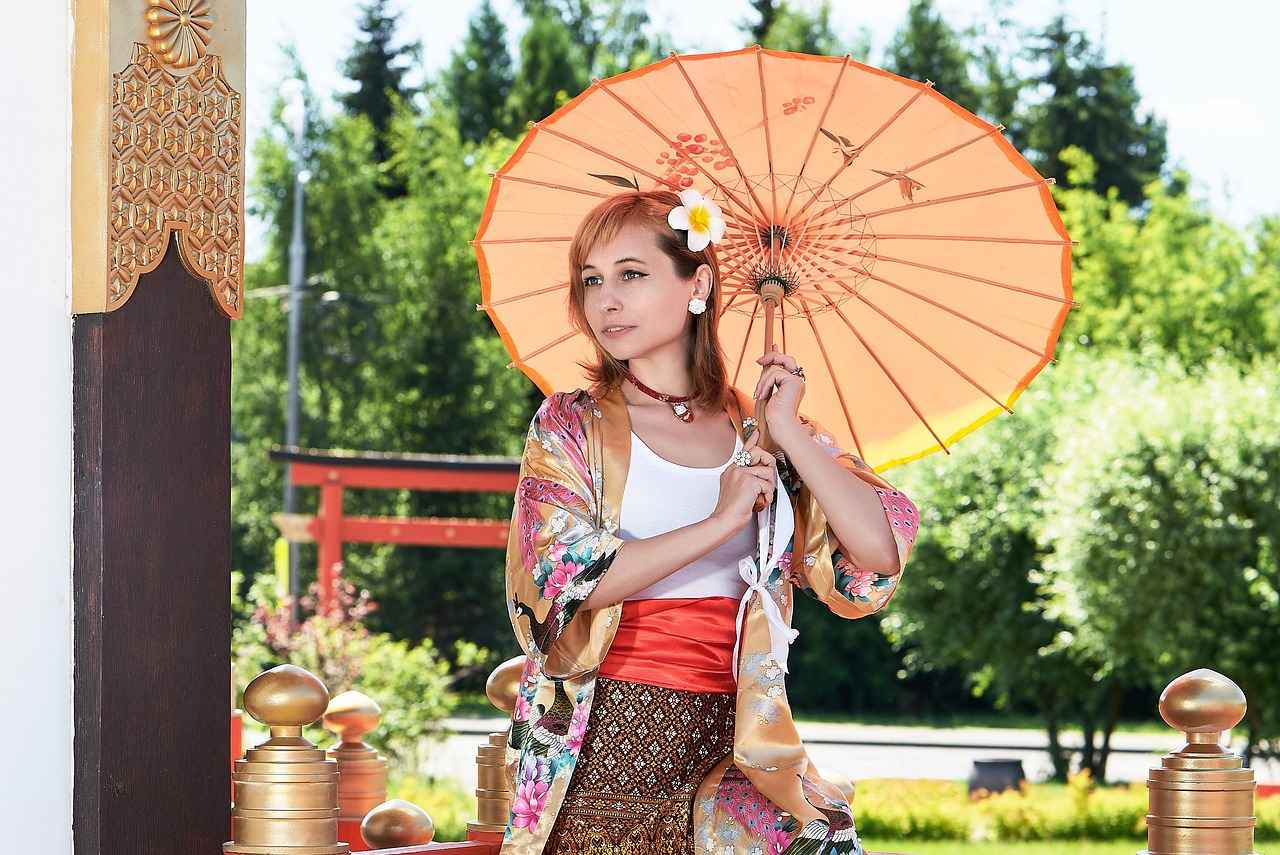
Storage Tips
Proper storage of a kimono is essential to maintain its beauty and longevity. Here are some effective strategies to ensure your kimono remains in pristine condition:
- Use Breathable Garment Bags: Always store your kimono in breathable garment bags made of natural fibers. This allows air circulation, preventing moisture buildup that can lead to mold and mildew.
- Avoid Direct Sunlight: Keep your kimono away from direct sunlight, as prolonged exposure can cause fading and deterioration of the fabric. Choose a cool, dark place for storage.
- Maintain a Cool Environment: Store your kimono in a climate-controlled environment. Extreme temperatures and humidity can damage the fabric, leading to warping or discoloration.
- Use Acid-Free Tissue Paper: When folding your kimono for storage, place acid-free tissue paper between the folds. This prevents creases and helps maintain the garment’s shape.
- Regularly Check for Pests: Inspect your storage area frequently for any signs of pests, such as moths, which can cause irreparable damage to the fabric. Consider using cedar blocks or lavender sachets to deter insects.
- Avoid Hanging for Long Periods: While it may be tempting to hang your kimono, prolonged hanging can stretch the fabric. Instead, fold it neatly and store it flat when not in use.
- Keep Away from Strong Odors: Store your kimono away from strong-smelling substances, as fabrics can absorb odors over time, which may be difficult to remove.
By following these storage tips, you can ensure that your kimono remains a treasured piece of cultural heritage for years to come. Proper care and attention to detail will help preserve its beauty and significance.
The Cultural Significance of Kimono
The cultural significance of the kimono extends far beyond its role as a traditional garment. It embodies the rich tapestry of Japanese identity, representing deep-rooted cultural values, historical traditions, and the exquisite artistry of textile craftsmanship. The kimono is a living symbol of Japan’s heritage, showcasing the nation’s aesthetic sensibilities and social customs.
Historically, the kimono has been worn for centuries, evolving in style and meaning through various periods. Each kimono tells a story, reflecting the wearer’s status, age, and the occasion for which it is worn. For instance, formal kimonos, such as tomesode and furisode, are adorned with intricate designs and vibrant colors, often reserved for significant life events like weddings and ceremonies. In contrast, casual kimonos like yukata are typically worn during summer festivals, embodying a sense of leisure and enjoyment.
Moreover, the choice of colors and patterns in kimono design is steeped in symbolism. Different hues may signify various seasons, emotions, and even auspicious events, allowing the wearer to convey messages through their attire. This intricate relationship between color and meaning enhances the kimono’s role as a cultural artifact.
In modern Japan, while Western fashion influences have permeated daily life, the kimono remains a cherished garment, often donned during special occasions, festivals, and cultural events. This enduring presence highlights the kimono’s significance as a marker of Japanese identity, serving as a bridge between the past and the present.
In conclusion, the kimono is not just a piece of clothing; it is a profound representation of Japan’s cultural heritage. Understanding its significance fosters a deeper appreciation for the artistry and traditions that define the Japanese way of life.
Kimono in Japanese Festivals
Kimonos are not just garments; they are a vibrant expression of Japanese culture, especially during various festivals. These occasions are steeped in tradition and heritage, where the kimono plays a pivotal role in celebrating Japan’s rich history.
During festivals such as Hanami (cherry blossom viewing) and Tanabata (Star Festival), participants don exquisite kimonos that showcase the artistry and craftsmanship of Japanese textiles. The designs and colors of the kimonos worn during these events are often influenced by the season, with floral patterns symbolizing renewal and growth in spring, while deeper hues may represent the warmth of summer or the vibrant colors of autumn.
| Festival | Kimono Style | Color Significance |
|---|---|---|
| Hanami | Yukata | Pastels and Floral Patterns |
| Tanabata | Furisode | Bright Colors for Celebration |
| Shichi-Go-San | Tomesode | Rich Colors for Formality |
Furthermore, the act of wearing a kimono during these festivals is a way to connect with Japanese heritage. Participants often take part in traditional activities such as tea ceremonies and folk dances, enhancing the overall experience. The vibrant colors and intricate patterns of the kimonos not only reflect the wearer’s personality but also contribute to the festive atmosphere, creating a visual feast for both participants and onlookers alike.
In conclusion, kimonos are an essential part of Japanese festivals, embodying the spirit of celebration and cultural pride. They serve as a reminder of the importance of tradition and the beauty of Japan’s artistic expression.
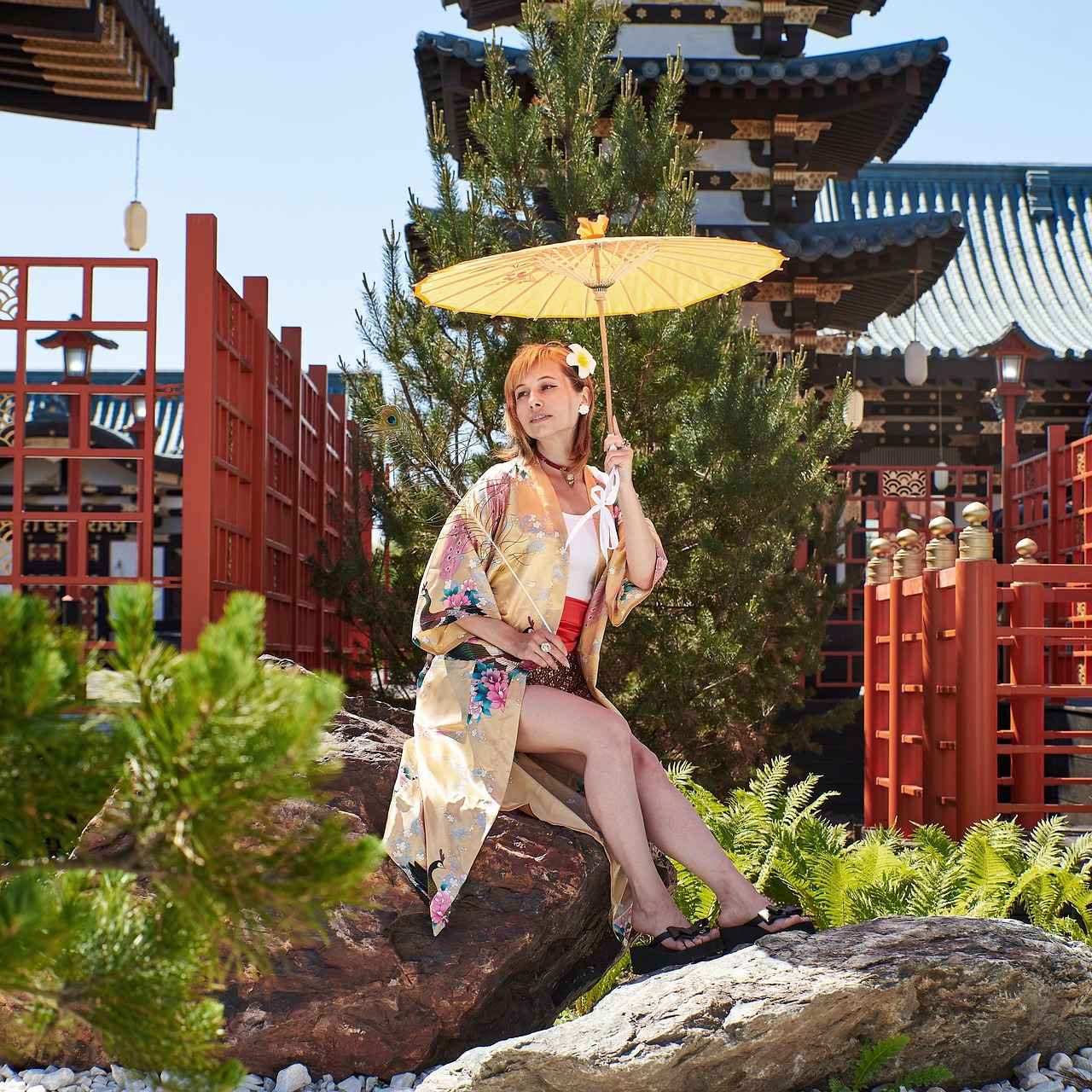
Kimono as a Symbol of Identity
The kimono is more than just a garment; it is a profound symbol of Japanese identity. This traditional attire encapsulates the essence of Japan’s rich history, intricate artistry, and enduring cultural practices. The kimono is a testament to the nation’s ability to blend ancient customs with modern sensibilities, making it a significant emblem of national pride.
Historically, the kimono has evolved through various periods, reflecting the changing dynamics of Japanese society. Each style and design carries with it a story, often linked to significant cultural rituals and celebrations. For instance, during traditional ceremonies such as weddings and festivals, the kimono is worn with great reverence, symbolizing purity and respect. The vibrant colors and patterns are not merely aesthetic choices; they often represent specific meanings related to the season, occasion, or the wearer’s status.
The artistry involved in kimono making is also noteworthy. Skilled artisans devote years to mastering techniques that include dyeing, weaving, and embroidery. This craftsmanship not only preserves the cultural heritage of Japan but also fosters a deep connection between the wearer and their ancestry. Wearing a kimono becomes a way to participate in a living tradition, allowing individuals to express their identity and heritage.
In contemporary Japan, while the kimono may not be worn daily, it remains a powerful symbol during significant life events and cultural festivals. The resurgence of interest in traditional attire among younger generations highlights a growing appreciation for cultural roots and identity. Thus, the kimono stands as a bridge between the past and the present, embodying the spirit of Japan through its artistry, history, and the profound connections it fosters within the community.
In conclusion, the kimono is an enduring symbol of Japanese identity, representing the intricate tapestry of the nation’s history and cultural practices. It serves as a reminder of the importance of heritage, artistry, and the connections that bind individuals to their cultural roots.
Conclusion: Embracing the Kimono Tradition
The kimono, a traditional Japanese garment, holds a profound significance that transcends mere fashion. Understanding the kimono’s significance enriches the appreciation of this traditional attire, encouraging a deeper connection to Japan’s cultural heritage and artistry. This beautiful garment is not only a reflection of Japan’s history but also a symbol of its aesthetic values and social customs.
Historically, the kimono has been a canvas for artistic expression, showcasing the intricate craftsmanship of textile artisans. Each kimono tells a story through its colors, patterns, and styles, which vary depending on the season, occasion, and even the wearer’s status. For instance, during the Heian period, kimonos were often layered and adorned with elaborate designs, exemplifying the importance of aesthetics in Japanese culture.
In contemporary society, the kimono continues to evolve while retaining its traditional essence. It is worn during significant life events such as weddings, graduations, and festivals, where it serves as a reminder of cultural roots and shared heritage. The kimono’s adaptability to modern fashion trends has allowed it to remain relevant, appealing to both younger generations and traditionalists alike.
Moreover, the kimono’s significance extends beyond its aesthetic appeal; it embodies a rich tapestry of cultural practices and rituals. Wearing a kimono often involves specific techniques and accessories that enhance its beauty, allowing individuals to express their personal style while honoring tradition.
In conclusion, embracing the kimono tradition is about more than just donning a beautiful garment; it is a journey into understanding Japan’s cultural identity. By appreciating the artistry and significance of the kimono, one fosters a deeper connection to the history and values that shape Japanese society today.
Frequently Asked Questions
- What is the significance of wearing a kimono?
The kimono is not just clothing; it represents Japan’s rich cultural heritage. Wearing a kimono during festivals, weddings, or ceremonies symbolizes respect for tradition and a connection to one’s identity.
- How do I choose the right type of kimono for an occasion?
Choosing the right kimono depends on the event. For formal occasions, opt for tomesode or furisode, which are more elaborate. For casual outings, a yukata is perfect, especially during summer festivals.
- Can I wear a kimono if I’m not Japanese?
Absolutely! The kimono can be worn by anyone who appreciates its beauty and cultural significance. Just remember to respect the traditions and styles associated with it.
- How should I care for my kimono?
Proper care is crucial. For cleaning, consider professional dry cleaning or gentle hand washing. Store your kimono in a breathable garment bag and keep it out of direct sunlight to maintain its vibrant colors.
- What accessories should I wear with a kimono?
Accessories like obiage, obijime, and haneri can enhance your kimono’s look. They allow for personal expression while keeping in line with traditional styling conventions.
